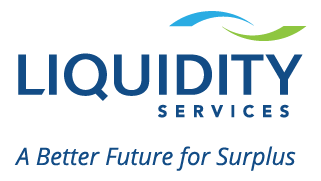I was recently interviewed on Jack Sweeney’s Middle Market Executive podcast, which features middle-market business leaders contributing our stories, lessons learned, challenges and wins. During the interview, I had the opportunity to share my thoughts on a variety of topics ranging from my basic toolkit for leadership, to the growth of Liquidity Services and the state of the company today. I’m pleased to share the highlights of this interview with our blog readers.
The Basic Toolkit for Leadership
Growing up in the Midwest, I had numerous opportunities to try new things that would help me develop personally and academically, setting the stage for my future professional growth. I participated in sports, which encouraged me to push the boundaries of my comfort zone and learn what it means to be a part of a successful team. I held summer jobs like delivering newspapers and running a landscaping service, which also taught me valuable lessons about responsibility and leadership. When it was time to go to college, leaving Iowa to attending Notre Dame broadened my horizons.
The reason I say all of this is to explain that leadership isn’t something you learn in a short time. It’s a lifelong culmination of so many different experiences – pushing your boundaries, getting in the trenches and working hard, taking education seriously and learning how to work within a team and lead effectively. But I also feel that when it comes to leading a business, there are more concrete skills that you absolutely must develop and add to your toolkit. Here are some of the essentials:
- Learn the language of accounting: Accounting is the language of the business world, and understanding how different revenue and expense models affect a business is essential to becoming a good leader.
- Be able to communicate ideas effectively: It’s not enough to just have ideas; you have to know how to sell them, too. As a leader, you’re going to be pitching to investors, getting a team to buy into a vision and selling to clients. You have to be able to get people to embrace what you’re saying on an emotional level.
- Know where your market is going: You might have a great idea of what your market needs today, but you also need to know where it’s going. This is how you build a vision that your team can rally behind.

Learning the language of accounting will deepen your understanding of your entire business.
The Growth of Liquidity Services
We started Liquidity Services in the late 1990s – tough timing, considering the dot-com bubble burst’s culmination in 2000. At the time, we wanted to work with retailers and large corporations, but they were pretty leery about working with a Web-based vendor because other Internet businesses were collapsing by the hundreds.
We recognized that it would be important to find that first set of customers who truly valued our service and wanted to do business with us on a regular basis, so we looked at federal, state and local government industries. That’s how we established our initial set of sellers and buyers, which allowed us to validate that we could improve the results for surplus asset sales using an online model. We went through a three-year investment cycle to successfully onboard the federal, state and local clients, but it was a critical early success.
Our first clients were able to more than double the sales value realized for their assets via our marketplaces. This provided us with a clearly established set of case studies that we could then take to the commercial market. In 2004 and 2005 we grew our client base to include large retailers, opening up new services around our warehouse distribution center network.
Then, Liquidity Services went public about eight years ago. In addition to the branding opportunities it afforded us, it allowed us to take advantage of the technological and economic trends that were guiding business worldwide. Everyone is highly connected by trade and by technology, and we knew we had a chance to help businesses capitalize on those trends by offering an online platform that allows them to quickly and reliably access the global markets.

Liquidity Services has grown steadily and profitably since we started in 1999.
Where Liquidity Services Is Now, And Where We’re Going
Today, we are headquartered in Washington, DC, and we still have a large number of customers in the public sector – about one-third of our business. The other two-thirds is in the commercial sector. To provide superior service globally, we have 53 locations that span 21 countries and six continents. These locations have experienced personnel that support both buyers and sellers. We help clients recover more value for large equipment across industries, while providing superior customer support to our buyers.
Our goal, as always, is to replace traditional liquidation auction solutions with a more robust suite of services. As a public company, we continue to make investments in our strategy to be a global business. Sometimes it’s difficult for some investors in the public market to be comfortable investing in a company that doesn’t grow in a straight line. But we’ve always had periods of market expansion and integration to ensure we have the right systems, people, processes, and products to be relevant and innovative. And then, we’ll have periods where we do not grow. Regardless, we continue to find opportunity in the big trends that are shaping commerce throughout the world and position ourselves for long term success.




Comments are closed.